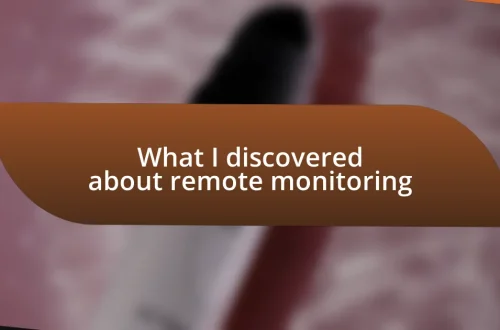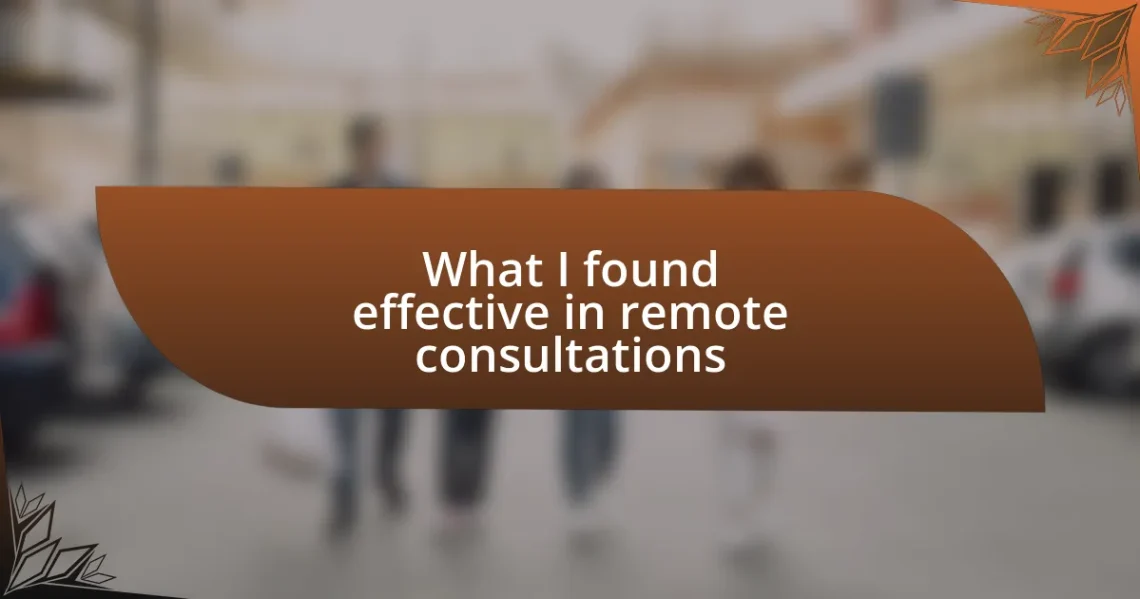
What I found effective in remote consultations
Key takeaways:
- Remote consultations enhance accessibility but can create communication challenges; adapting approaches is essential to maintain personal connections.
- Effective tools like Zoom, TheraNest, and Calendly streamline the consultation process while ensuring security and ease of scheduling.
- Building rapport in virtual meetings involves casual conversation, eye contact, and encouraging participation to foster trust and connection.
- Measuring success through patient satisfaction, monitoring outcomes, and engagement metrics helps improve the effectiveness of remote consultations.
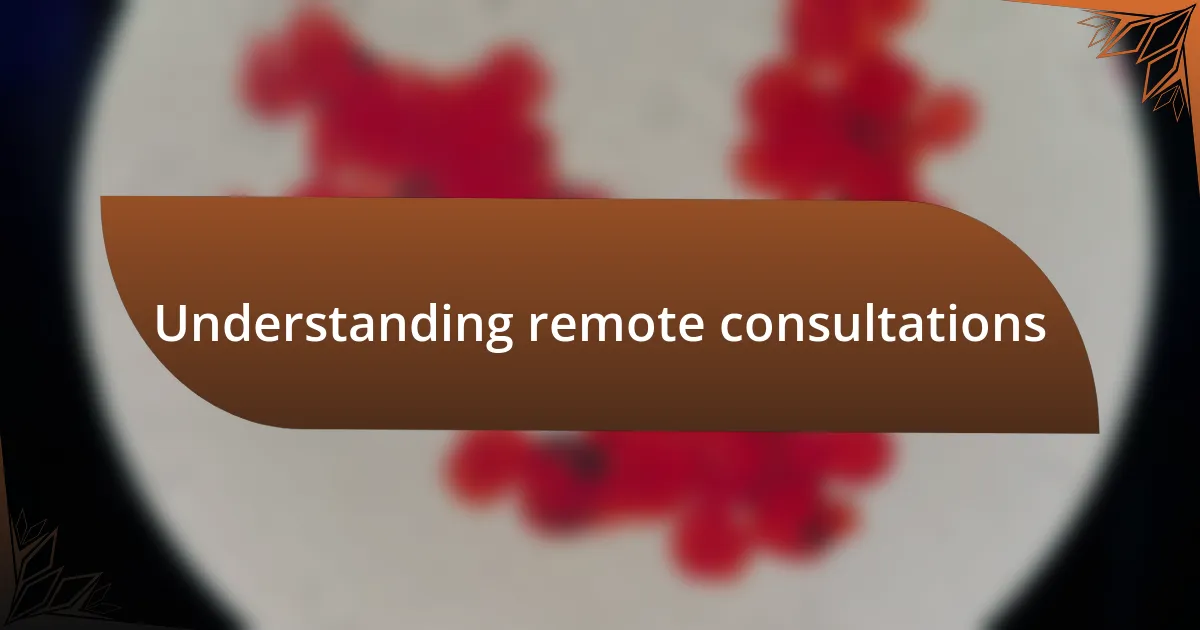
Understanding remote consultations
Remote consultations have become a vital part of how we communicate in various fields, especially in healthcare and education. I remember my first virtual appointment; the initial awkwardness of staring at a screen was palpable. It’s fascinating to think about how technology has transformed what used to be face-to-face interactions into something so accessible.
When I think of remote consultations, I assess both their advantages and challenges. For instance, I appreciate the convenience of connecting from home, but have you ever felt a disconnect when you’re unable to read body language fully? I certainly have. This nuance can sometimes hinder the effectiveness of communication, making it essential to adapt our approaches to maintain personal connections.
One of the most enlightening aspects of remote consultations is the ability to reach individuals who might otherwise struggle to access services. I recall a client who lived in a rural area, where healthcare options were limited. The relief in their voice when they realized they could now receive professional support from their home was incredibly moving. It highlighted how remote consultations can bridge gaps, enabling us to foster meaningful relationships, even across distances.
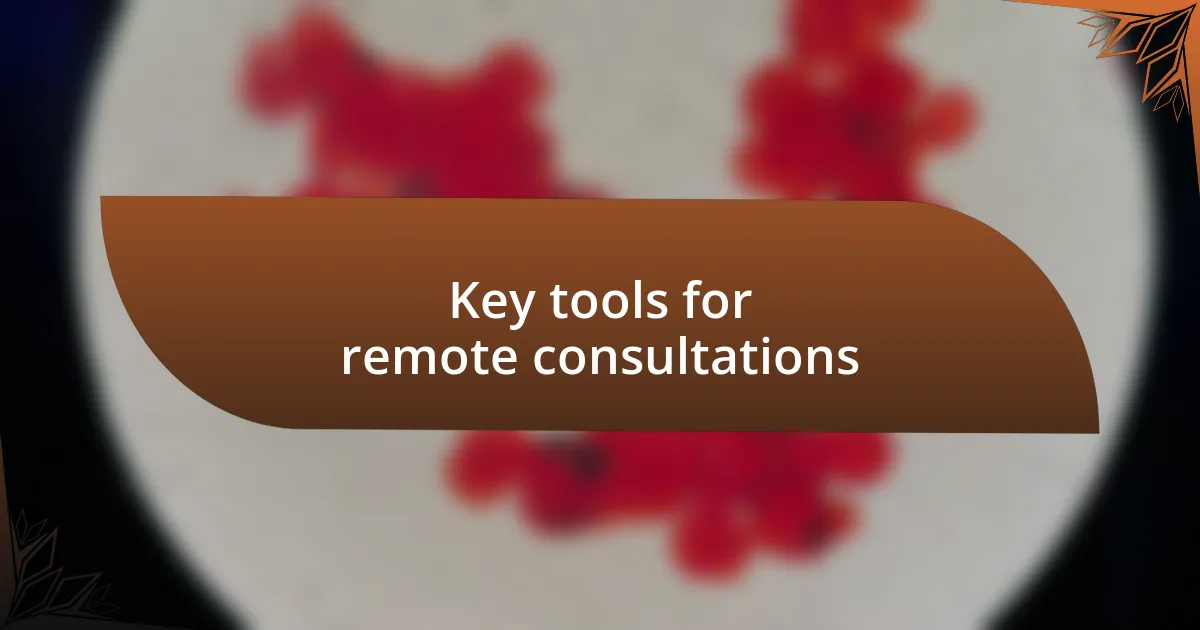
Key tools for remote consultations
For remote consultations, the right tools can significantly enhance the experience. I’ve found that platforms like Zoom and Microsoft Teams offer not just video capability but also features like screen sharing. This means we can collaborate seamlessly, just like we would in a physical meeting. I once facilitated a workshop using these tools, and I was amazed at how engaged everyone was despite being miles apart.
Security is another crucial consideration in remote consultations. Tools like TheraNest and Doxy.me provide encrypted sessions specifically designed for healthcare, ensuring that confidential information remains secure. My experience using such platforms gave me peace of mind when discussing sensitive topics with clients. It’s comforting to know that privacy is prioritized in our digital interactions.
Finally, scheduling tools like Calendly or Acuity have streamlined appointment setting. I used to struggle with back-and-forth emails trying to find a suitable time. Now, I simply share my calendar link, and clients can select their preferred slots, making the process efficient and hassle-free. This small change has made a big difference in my workflow, allowing me to focus more on the consultations themselves rather than on logistics.
| Tool | Features |
|---|---|
| Zoom | Video conferencing, screen sharing |
| TheraNest | Encrypted sessions, tailored for healthcare |
| Calendly | Easy scheduling, calendar sharing |
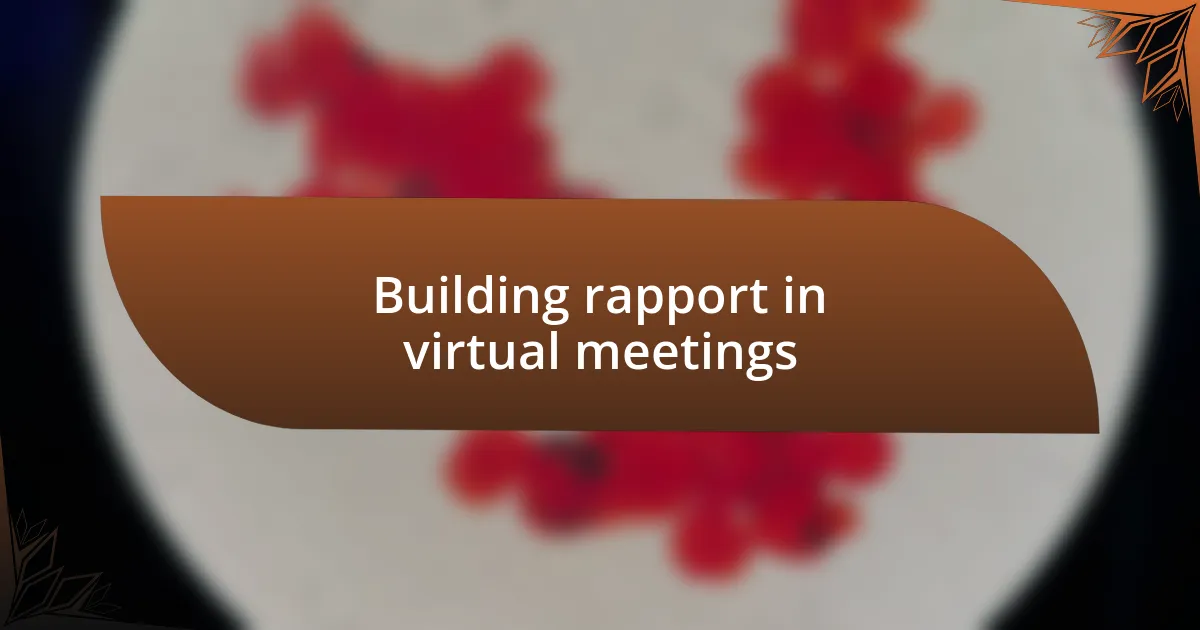
Building rapport in virtual meetings
Building rapport in virtual meetings can be challenging, but I’ve discovered several strategies that truly help. One approach I find effective is opening the meeting with casual conversation or some light-hearted banter. For instance, I often ask about my clients’ weekend plans or their favorite shows. This not only warms up the interaction but also humanizes the experience, making everyone feel more at ease. I remember a session where one simple question about pet names led to an engaging discussion that set a friendly tone for the rest of the meeting.
To help you build rapport during virtual meetings, consider these tips:
- Use personal anecdotes or relatable stories to connect.
- Maintain eye contact by looking into the camera, which creates a sense of presence.
- Employ non-verbal cues, like nodding, to show you are actively engaged.
- Be mindful of your tone; a warm and inviting tone can make a big difference.
- Encourage participants to share their thoughts and experiences freely, crafting a two-way conversation.
Incorporating these techniques can transform virtual consultations from merely transactional interactions into meaningful conversations that foster trust and connection.
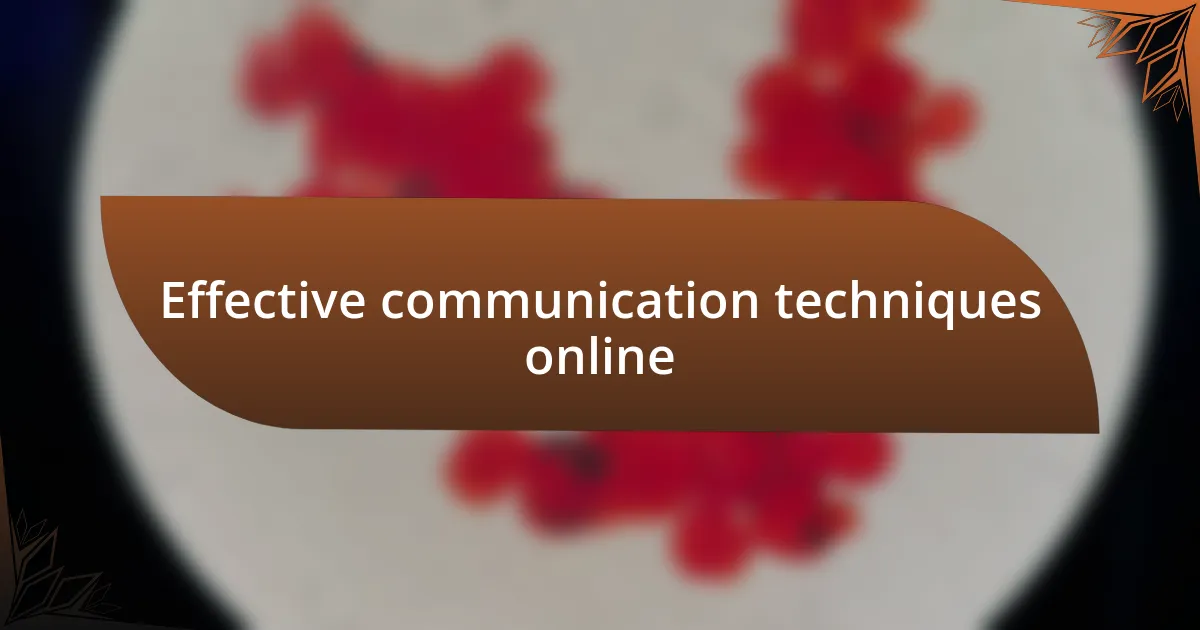
Effective communication techniques online
Effective communication online relies heavily on clarity and conciseness. I’ve learned that speaking slowly and being deliberate with my words can significantly enhance understanding. For example, during a recent consultation, I noticed that when I broke down complex ideas into bite-sized pieces, my clients felt more empowered to ask questions. It made me reflect: isn’t it our responsibility to ensure that everyone is on the same page?
Another key aspect is the use of visual aids. Whether it’s slides, diagrams, or shared documents, these tools can clarify points and keep everyone engaged. I remember once sharing a simple chart to explain a process. It transformed the discussion, as people could visually grasp what I was saying, leading to a more dynamic conversation. Have you ever found that a well-timed visual can spark a deeper understanding?
Lastly, I find it essential to actively listen and provide feedback. This involves summarizing what I hear and checking for comprehension. Once, in a heated discussion, I took a moment to restate my client’s concerns. This not only validated their feelings but also opened a door for more in-depth problem-solving. It’s powerful to recognize that effective communication is as much about how we listen as how we speak.
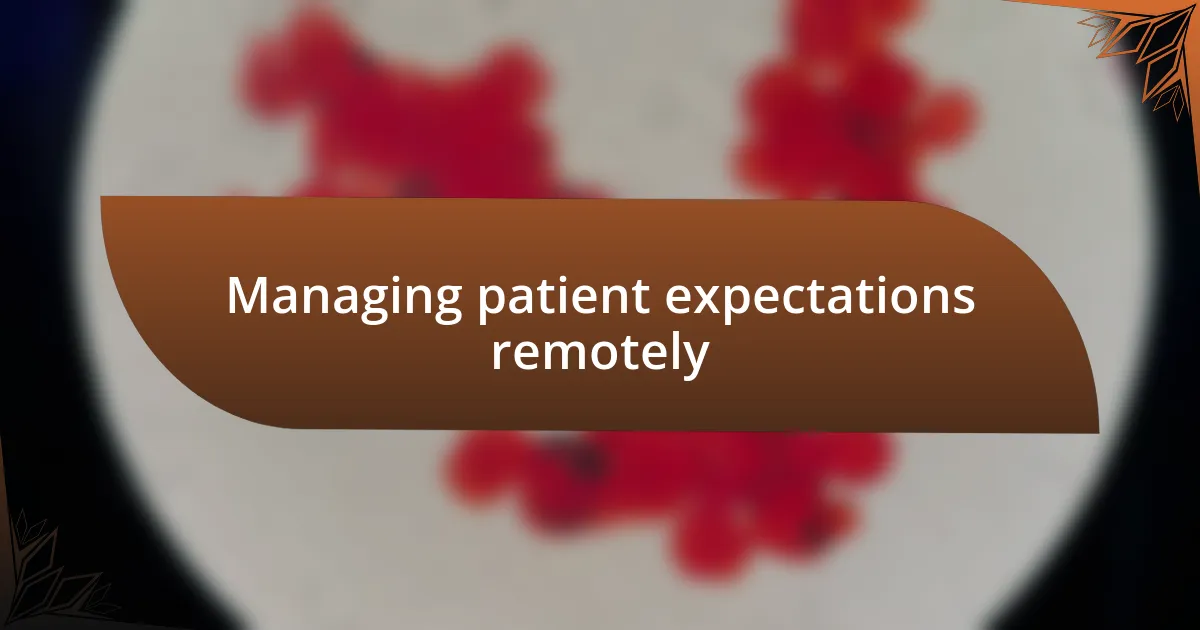
Managing patient expectations remotely
Managing patient expectations in a remote setting can be a delicate balancing act. In my experience, it’s vital to set clear objectives at the start of each consultation. I’ve often found that explicitly outlining what patients can expect helps in reducing anxiety. For instance, when I explain potential outcomes and timeframes clearly, patients feel more grounded and involved in the process. Have you noticed how clarity can transform uncertainty into confidence?
Regular check-ins are another strategy I’ve embraced. During a recent session, I asked a patient how they felt about the treatment plan we discussed. Their thoughtful response revealed concerns I hadn’t considered. This moment reminded me how critical it is to stay attuned to their feelings and perceptions, as they significantly impact engagement and satisfaction. A simple inquiry can lead to a more tailored and responsive approach, don’t you think?
I’ve also learned that empathy plays a crucial role. Patients often come to me with not just health concerns but emotional baggage as well. I recall a time when a patient expressed frustration about the limitations of remote care. By acknowledging their feelings and sharing a similar experience from my past, I was able to foster trust and openness. This connection allowed us to collaboratively reshape their expectations, making the entire process feel more meaningful. That emotional resonance can really bridge the distance, couldn’t it?

Tips for successful follow-ups
Effective follow-ups can make all the difference in remote consultations. Personally, I’ve found that sending a brief recap of our conversation immediately after the session reinforces what we discussed. This not only helps patients recall important details, but also shows them that I value their engagement and time—making them feel more involved in their care journey.
Another approach that’s worked for me is scheduling follow-up appointments or check-ins in advance. I’ve experienced patients becoming more proactive about their health when they know that a follow-up is just around the corner. It creates a sense of accountability and support that can enhance their commitment to the treatment plan. Have you seen how establishing this rhythm can create a more motivated patient?
Lastly, I also encourage patients to reach out if they have questions between sessions. There was a time when a patient reached out with a concern about their medication timing, and I was able to address it promptly. This open line of communication not only alleviated their anxiety but strengthened our therapeutic relationship. It’s amazing how a little encouragement to connect can lead to deeper trust and engagement, doesn’t it?
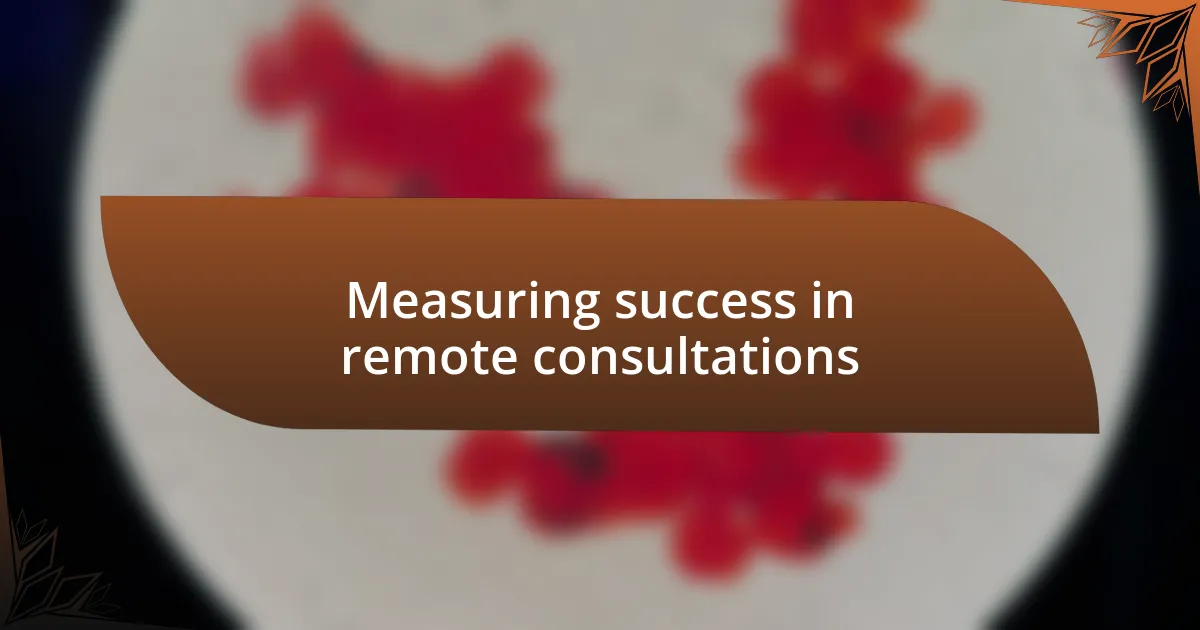
Measuring success in remote consultations
Measuring success in remote consultations can be quite enlightening. I’ve noticed that tracking patient satisfaction through simple post-appointment surveys gives me valuable insights. One time, after implementing a brief, anonymous feedback form, a patient expressed that they appreciated the flexibility of remote consultations but desired a bit more visual guidance during our discussions. This kind of feedback is crucial—it not only helps me improve my practice, but it also reinforces that my patients’ experiences matter.
Another aspect I find significant is monitoring patient outcomes over time. I once had a long-term patient who struggled with weight management, and after several months of remote check-ins, we noted a marked improvement in her overall health metrics. When I shared the positive trends with her, it not only motivated her further but also helped me feel accomplished as a healthcare provider. Isn’t it rewarding to witness tangible progress in your patient’s journey?
Engagement metrics can also serve as a good measure of success. I often analyze how often my patients reach out with questions or for clarifications. I remember a situation where a patient routinely contacted me with their thoughts on a treatment plan, which indicated they were actively involved in their care. Isn’t it a sign of success when patients take that extra step to engage with the process? By connecting these dots, I continually strive to improve both patient experience and outcomes.


